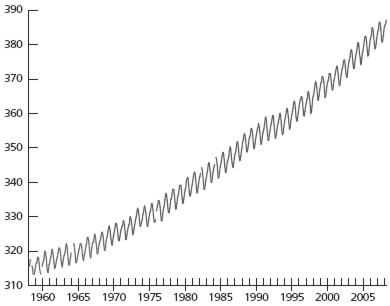Quote:
A study by the University of Leeds, published in the science journal Nature, measured the girth of 70,000 trees across 10 African countries and compared them with similar records made four decades ago.
On average, the trees were getting bigger faster and researchers found that each hectare of African forest was trapping an extra 0.6 tons of CO2 a year compared with the 1960s.
If this is replicated across the world's tropical rainforests they would be removing nearly 5 billion tons of CO2 a year from the atmosphere.
Scientists have been looking for a similar impact on crop yields and the experiments generally suggest that raised CO2 levels would boost the yields of mainstream crops, such as maize, rice and soy, by about 13 per cent.
Professor Martin Parry, head of plant science at Rothamsted Research, Britain's leading crop institute, said: "There is no doubt that the enrichment of the air with CO2 is increasing plant growth rates in many areas.
http://www.telegraph.co.uk/earth/environ...al-warming.html
A study by the University of Leeds, published in the science journal Nature, measured the girth of 70,000 trees across 10 African countries and compared them with similar records made four decades ago.
On average, the trees were getting bigger faster and researchers found that each hectare of African forest was trapping an extra 0.6 tons of CO2 a year compared with the 1960s.
If this is replicated across the world's tropical rainforests they would be removing nearly 5 billion tons of CO2 a year from the atmosphere.
Scientists have been looking for a similar impact on crop yields and the experiments generally suggest that raised CO2 levels would boost the yields of mainstream crops, such as maize, rice and soy, by about 13 per cent.
Professor Martin Parry, head of plant science at Rothamsted Research, Britain's leading crop institute, said: "There is no doubt that the enrichment of the air with CO2 is increasing plant growth rates in many areas.
http://www.telegraph.co.uk/earth/environ...al-warming.html





